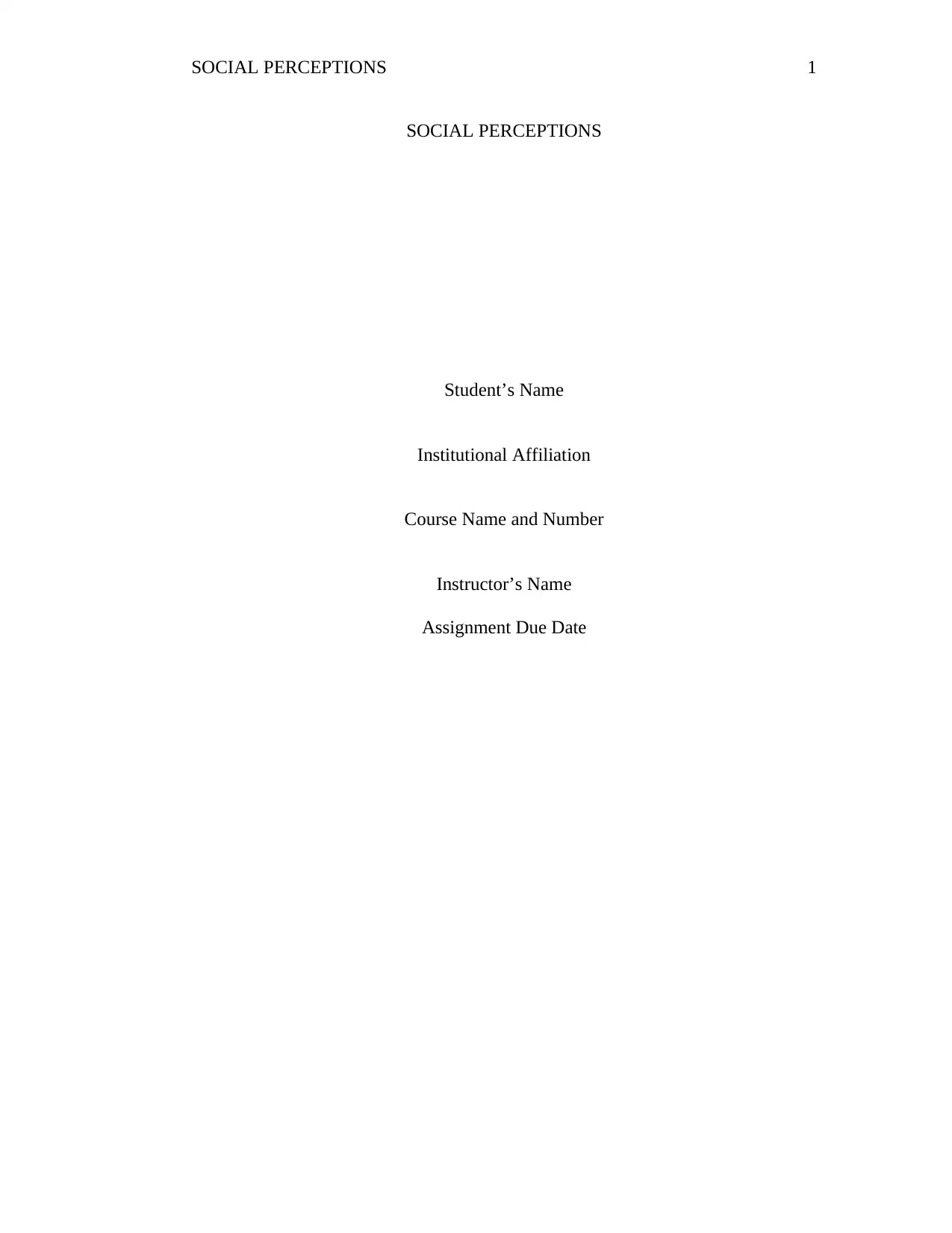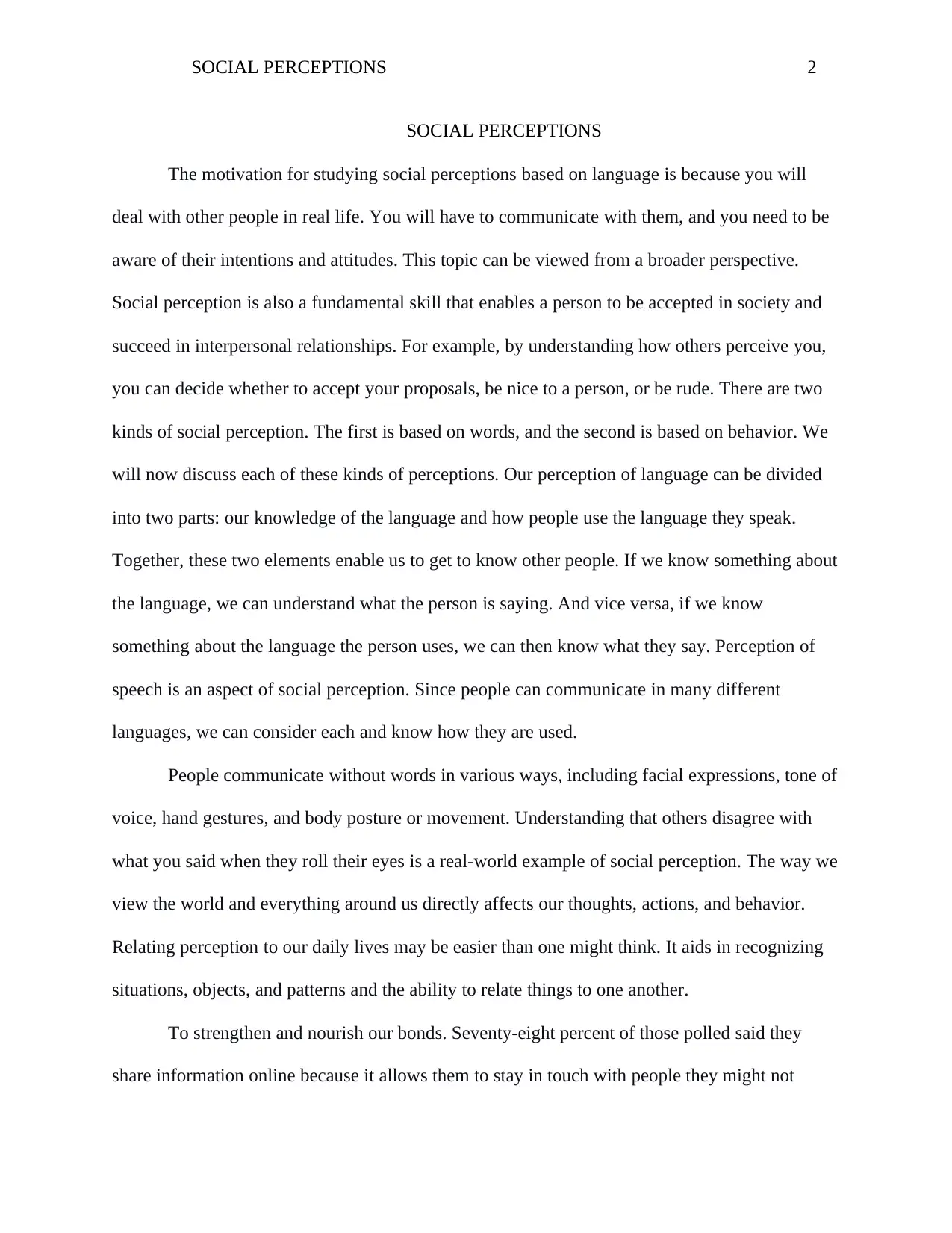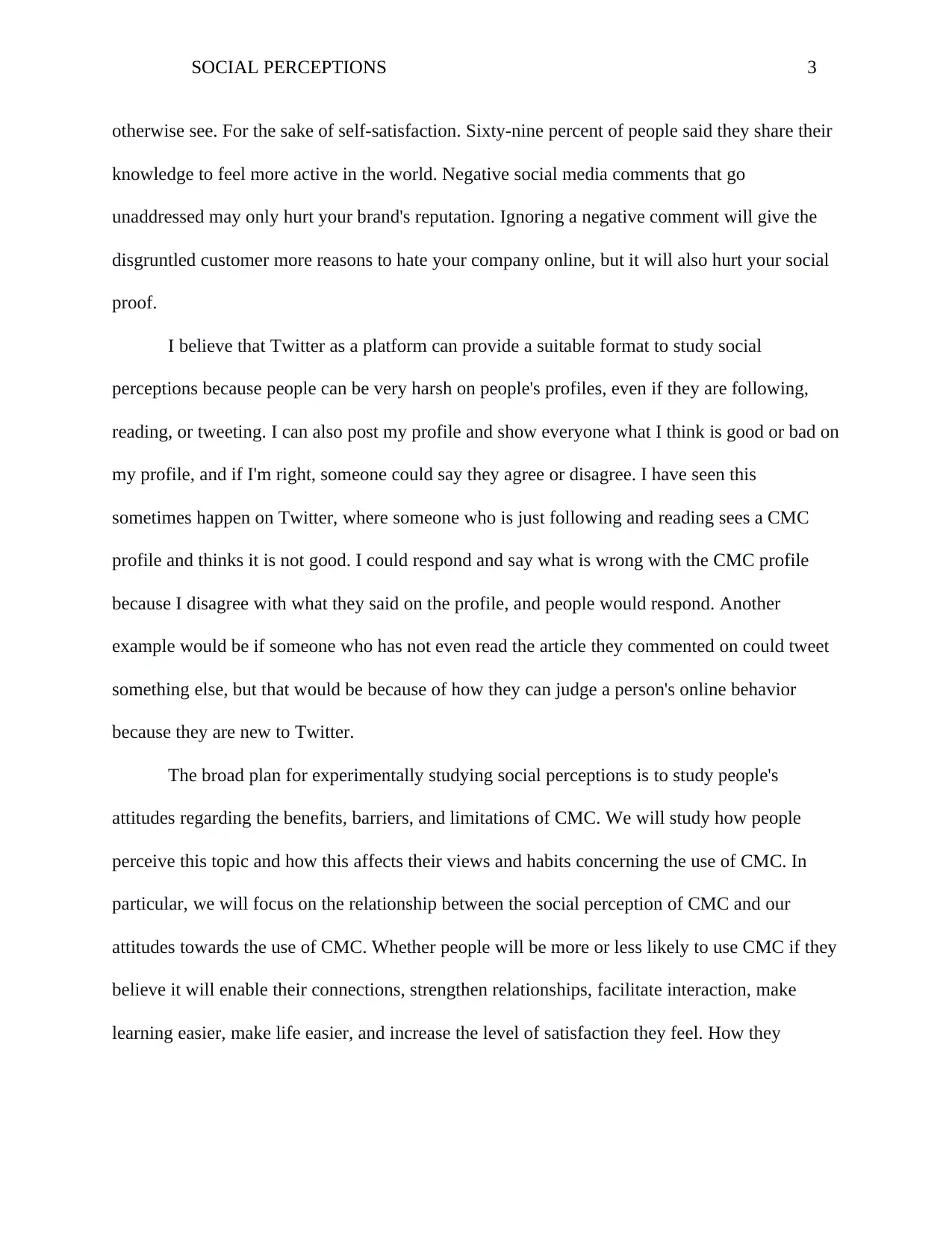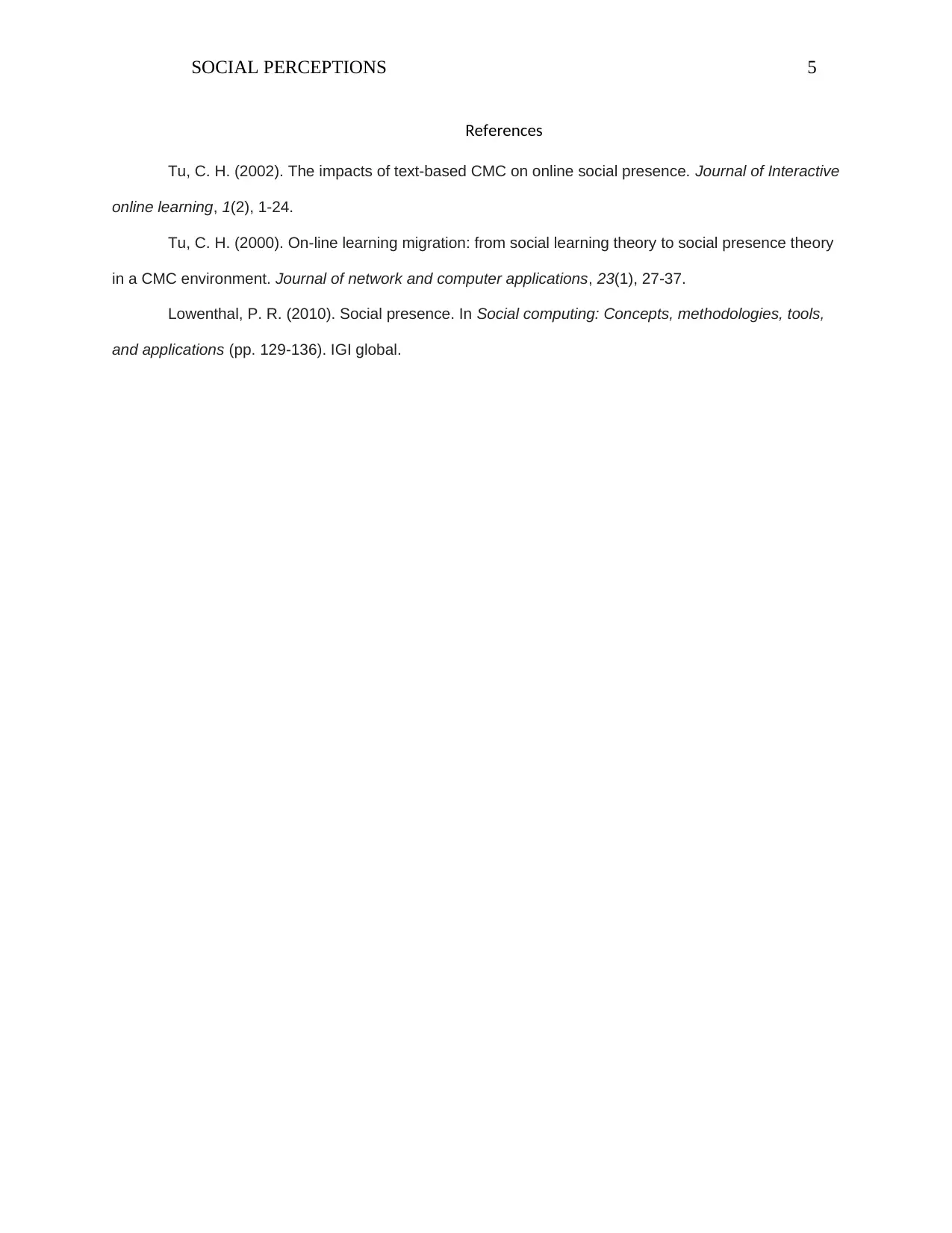Social Perceptions: Language, Behavior, and CMC Analysis Essay
VerifiedAdded on 2022/09/15
|5
|879
|27
Essay
AI Summary
This essay delves into the multifaceted concept of social perception, emphasizing its significance in real-life interactions and interpersonal relationships. It distinguishes between social perceptions based on language and behavior, examining how our understanding of others' intentions and attitudes shapes our responses. The essay explores the impact of language perception, including both language knowledge and usage, on our ability to understand others. It further examines non-verbal communication such as facial expressions and body language. It also explores Computer-Mediated Communication (CMC) and its role in shaping social perceptions, specifically considering the influence of social media platforms like Twitter, and how online behavior and comments can be studied experimentally. The essay also touches on the benefits, barriers, and limitations of CMC and its impact on how people perceive and use this form of communication. The essay concludes by referencing relevant studies that support the concepts discussed.
1 out of 5












![[object Object]](/_next/static/media/star-bottom.7253800d.svg)